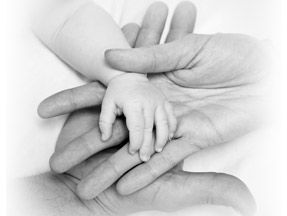 Welcome to the NBSTRN resource page for parents who are interested in learning more about Newborn Screening and its effects on them and their family. This section is an organized collection of useful resources for parents and families.
Welcome to the NBSTRN resource page for parents who are interested in learning more about Newborn Screening and its effects on them and their family. This section is an organized collection of useful resources for parents and families.
What is Newborn Screening?
Newborn screening is a public health program to promote the testing of all babies for particular harmful or potentially fatal conditions that may not be apparent at birth. Newborn screening involves taking a blood sample from a baby’s heel and occurs before your newborn leaves the hospital. The blood sample is sent to a laboratory that will test for a number of conditions. The actual conditions tested depend upon the state in which the testing is performed. Even though the conditions tested for are considered rare, and most babies are given a clean bill of health, testing is performed on the babies when they are one to two days old because early diagnosis and proper treatment can make the difference between lifelong impairment and healthy development.
In addition to the tests performed on the blood sample, a hearing test is performed on newborns. The hearing test is performed when a tiny earphone is placed in the baby's ear and his or her response to sound is measured.
If the blood or hearing screening test suggests a problem, your baby's doctor (usually their pediatrician) will follow up with recommendations for further testing. If a problem is confirmed, the doctor may refer you to a specialist for management and/or treatment. Following the treatment plan can save your baby from lifelong health and developmental problems.
Why is Newborn Screening Research Important?
Researchers around the country and across the globe are investigating the conditions included on the newborn screening testing panel. Their research interests cover a range of topics, but many are motivated by the desire to further understand the mechanisms that cause the disease and the treatments that can be used to diminish the effects of the disease. Researchers investigating the newborn screening conditions may use the NBSTRN resources to connect with entities that keep track of blood spot samples for their respective states. Because the conditions identified by newborn screening are relatively rare (i.e., each year around 12,000 babies – out of 4 million born – are diagnosed with one of the conditions), investigators researching one of the conditions may need to pool the resources available to them in order to have a study population large enough to give statistically significant results. The NBSTRN resources help investigators combine their efforts and work towards a common goal. The NBSTRN resources related to Institutional Review Board (IRB) and human subjects’ protection are also useful to researchers who are writing grants or applying for IRB approval from their research institution.
Where Can I Get More Information?
The following organizations maintain webpages that may be useful to you in your search for more information about newborn screening. Please contact us if you need assistance navigating these webpages.
For more information about newborn screening visit Baby's First Test and our other partners listed on the Links page.

